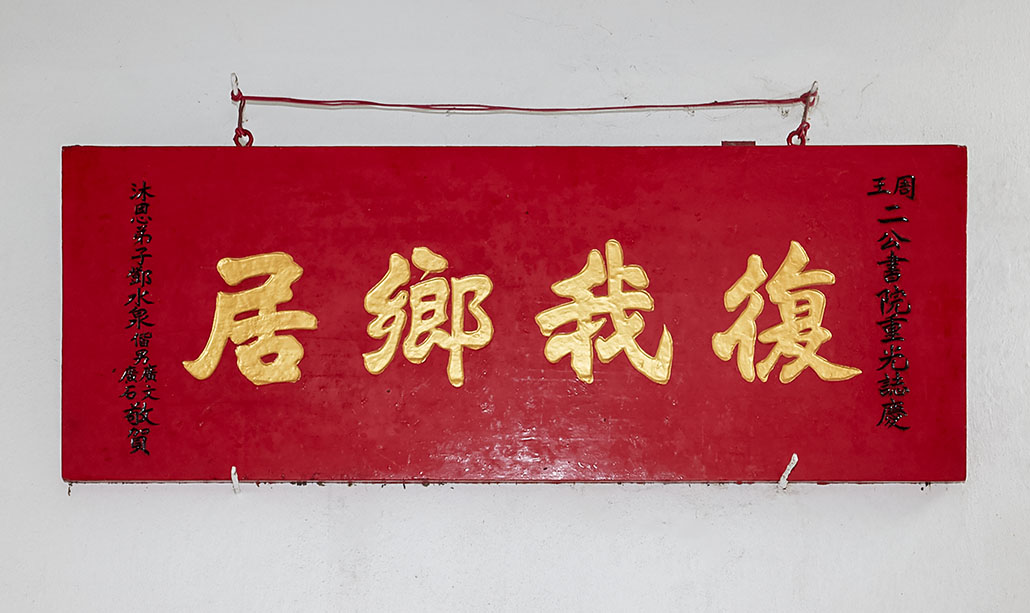Chou Wong Yi Kung Study Hall is located in Shui Tau Tsuen, Kam Tin. It was built by the residents of Kam Tin in the twenty-third year of Kangxi reign of Qing dynasty (1684) to commemorate the Viceroy of Guangdong and Guangxi, Zhou You-de, and the Governor of Guangdong, Wang Lai-ren, who contributed immensely to the lifting of the Coastal Evacuation Edict in the early Qing dynasty.
A sea ban was imposed in the early years of Qing dynasty, forbidding coastal people from going out to sea in a bid to cripple the anti-Qing forces of Zheng Cheng-gong. In the eighteenth year of Shunzhi reign of Qing dynasty (1661), the Coastal Evacuation Edict was promulgated, moving the population along the southeastern coast inland for 30 to 50 Chinese miles. All the fields and houses in the evacuated villages were burned, and the coastal residents lost their homes, and many people died or were injured. The Viceroy of Guangdong and Guangxi, Zhou You-de, and the Governor of Guangdong, Wang Lai-ren, adamantly told the Qing court about the people’s sufferings, and the Edict was finally rescinded in the eighth year of Kangxi reign of Qing dynasty (1669).
Chou Wong Yi Kung Study Hall was used to educate young clansmen. Once every decade during the Jiao Festival, memorial services and Cantonese opera were held in the space outside the study hall to release from purgatory the souls of those who had died in the coastal evacuation, and to seek blessings for local residents. The custom is still practised today.
Chou Wong Yi Kung Study Hall is an exemplar of Lingnan traditional architecture. It has a two-hall-three-bay layout with a courtyard, and side chambers on both sides of the courtyard. The study hall features a symmetrical layout, with the main hall along the central axis. In the main bay of the second hall, the soul tablets of Zhou and Wang are revered out of gratitude and respect. The study hall also exemplifies the art of Lingnan traditional architecture: the ridges are adorned with plaster mouldings featuring bogu (geometric) patterns; the wall frieze is decorated with vivid plaster mouldings and mural paintings depicting auspicious animals and plants; and the fascia boards are engraved with auspicious patterns. Several immensely significant plaques and inscriptions documenting the coastal evacuation and the history of the study hall have been preserved.
In addition to Chou Wong Yi Kung Study Hall, ancestral halls, statues and soul tablets were erected by coastal residents of Guangdong to commemorate the benevolent deeds of Zhou and Wang. Other buildings in Xin’an county dedicated to them include the Po Tak Temples in Shatou Xu (present-day Xixiang and Futian in Shenzhen) and Shek Wu Hui (present-day Tsun Fu Street in Sheung Shui). Today, various clans in Sheung Shui, Fanling and Taipo still celebrate the Chou Wong Yi Kung Festival on the nineteenth day of the fifth lunar month and the first day of the sixth lunar month. The ceremonies embody the Chinese virtue of showing gratitude for blessings and remembering those who have helped them.
Address:
Shui Tau Tsuen, Kam Tin, Yuen Long, New Territories.
Not open to the public





